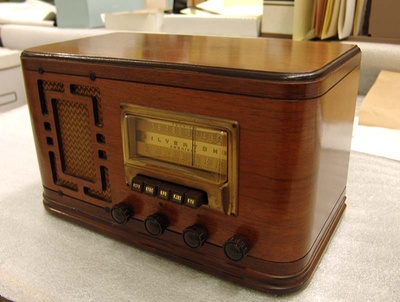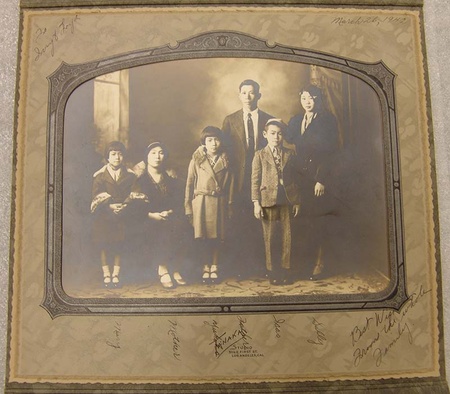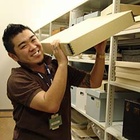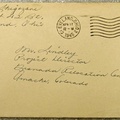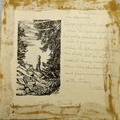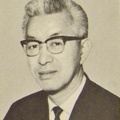To this point, we have examined three exceptional figures from the Japanese American community with remarkable stories and records. However, the sad truth is that for every item that we can properly describe, there are countless others that we can’t.
In 1999, JANM received a curious donation offer from Ms. Joyce MacWilliamson of Beaverton, Oregon:
Joyce MacWilliamson’s father Ramon “Mac” MacWilliamson took temporary ownership of a shortwave radio belonging to the 17 year old son of a Japanese American acquaintance. Following the bombing of Pearl Harbor by Japan, such radios were immediately considered to be contraband for Japanese Americans, out of fear that they would be used as a method for relaying subversive information.
Mr. MacWilliamson, who owned a tobacco shop in the Bay Area, also had an interest in such radios, and gladly maintained possession of the radio with the intent on returning it to the Japanese American man following World War II and the resettlement of Japanese Americans back to the West Coast. Unfortunately, this Japanese American man—whose name has long since been forgotten—never returned to reclaim the radio.
Interestingly, Mr. MacWilliamson and his daughter Joyce kept hope alive that someday this beautiful 1939 Silvertone radio could be returned to its original owners. In fact, they even kept this radio in their possession over the course of seven residential moves. However, despite writing letters to more than 50 Japanese American organizations, Joyce MacWilliamson was unable to gain any further clues as to this mysterious Japanese American radio owner.
As we can see, this radio remains in excellent condition, despite being over 70 years old. Anyone familiar with AM radio stations in the San Francisco Bay Area may also recognize some of the preset radio stations, including KSFO and KFRC.
While the radio was originally willed to be given to Joyce MacWilliamson’s two sons as a memorial keepsake of their grandfather, Ms. MacWilliamson instead chose to donate the item to JANM. In a letter to her sons explaining her decision, she writes:
“‘There is no virtue so truly great and godlike as justice’ is the quotation my father chose for his high school yearbook…Although he was powerless to prevent the wrong perpetrated against the Japanese-Americans, he never hesitated to tell others that it was unjust. I heard him argue about it with members of his own family who said that the camps were created for the protection of those who lived in them. Returning the radio cannot undo the harm that was done so many years ago, but it can demonstrate that at least one man cared enough to tell the story so that future generations would remember and not let it happen again.”
Ms. MacWilliamson also donated a family portrait that she came across and purchased at an antique store in Portland, Oregon. While the photo is dated March 26th, 1942, it is the opinion of some in the museum that it may have been taken as early as the 1930s due to the clothing and quality of the photo. The first names of all family members are recorded, however we have no idea which family this is. Ms. MacWilliamson purchased the photograph and included it as part of her donation since she didn’t believe it was “right to leave so personal an item to public view.”
While the radio and the photograph are fascinating artifacts in their own right in the context of pre-World War II American history, it is my personal hope that we are in fact temporarily holding these items with the greater purpose that someday, someone may be able to properly identify and claim these unique relics of Japanese America.
Although the odds of finding this radio’s original owner are stacked against us, this does not mean that we should throw in the towel in our quest to trace Japanese American history.
* This artifact was included in the recent JANM exhibition “American Tapestry: 25 Stories from the Collection”
* Related: listen to Daniel Inouye discuss his memories about the FBI and a radio here.
© 2012 Dean Adachi


